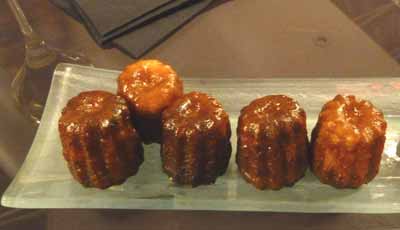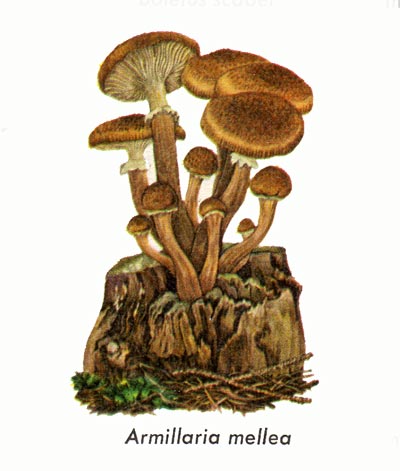
Rum baba. A rum baba is a spongy yeast cake containing raisins and steeped, while still warm, in rum or kirsch, said to have been discovered by the Polish king Stanisław Leszczyński when he dipped a kougelhopf in rum. His pastry chef, Sthorer, later perfected a dish of brioche dipped in rum. Although ‘baba’ seems to mean ‘old woman’ it is also said to be named after Ali Baba of the 1001 Nights. It is cooked in a special fluted, cylindrical mould resulting in a cake the shape of a long, gathered skirt. The baba also has a long association with Naples. If the raisins are omitted it is technically known as a small savarin.
The babáco originated in the Andean belt of Ecuador, but is now cultivated in New Zealand and Guernsey. It is a fruit about 25 cm (10 inches) long, a hybrid of the paw paw, slightly banana-like, pointed at one end and blunt at the other with five slightly concave sides. When it is cut open it reveals a five pointed star in section. When unripe the thin, waxy skin, which is edible, is pale green, and it ripens to a rich yellow all over. The riper and softer it is, the better the flavour. The juicy flesh is very pale apricot in colour, moist and juicy. The flavour is bland, but it can be refreshing on a hot day, like melon. There is a slight scent of strawberries and pineapple to the flesh when it is cut, but no flavour. It keeps well and is a good standby but needs livening up with sugar, citrus juice or spices. It is used either raw or cooked though good ones are best savoured raw.

A name in Ribera de Navarra in Castile-León for the honey fungus. They should always be well cooked.
Patagonian toothfish. A fish with a taste similar to swordfish and tuna, fished in the Southern Atlantic and Southern Ocean.